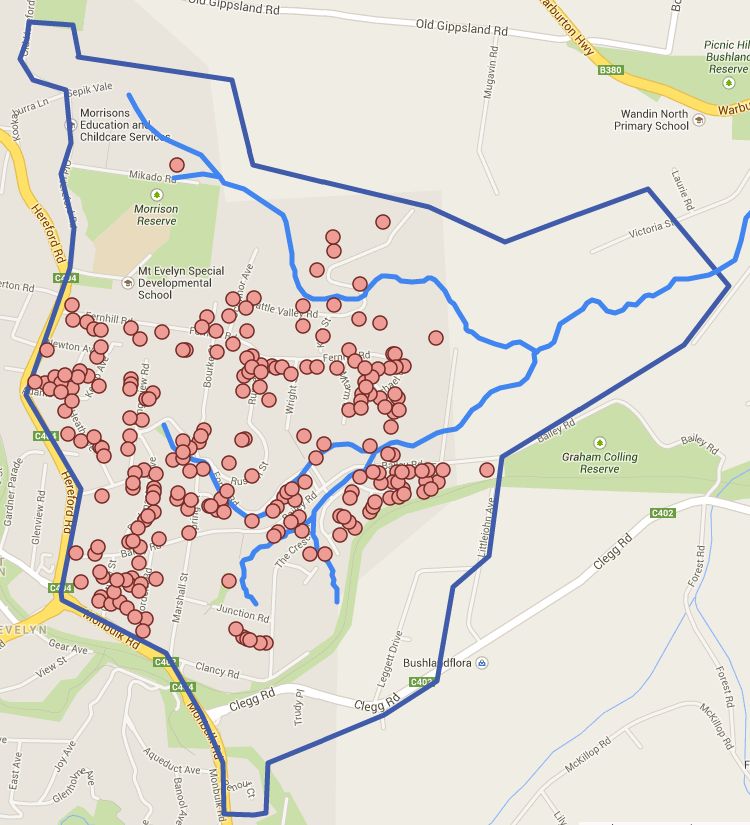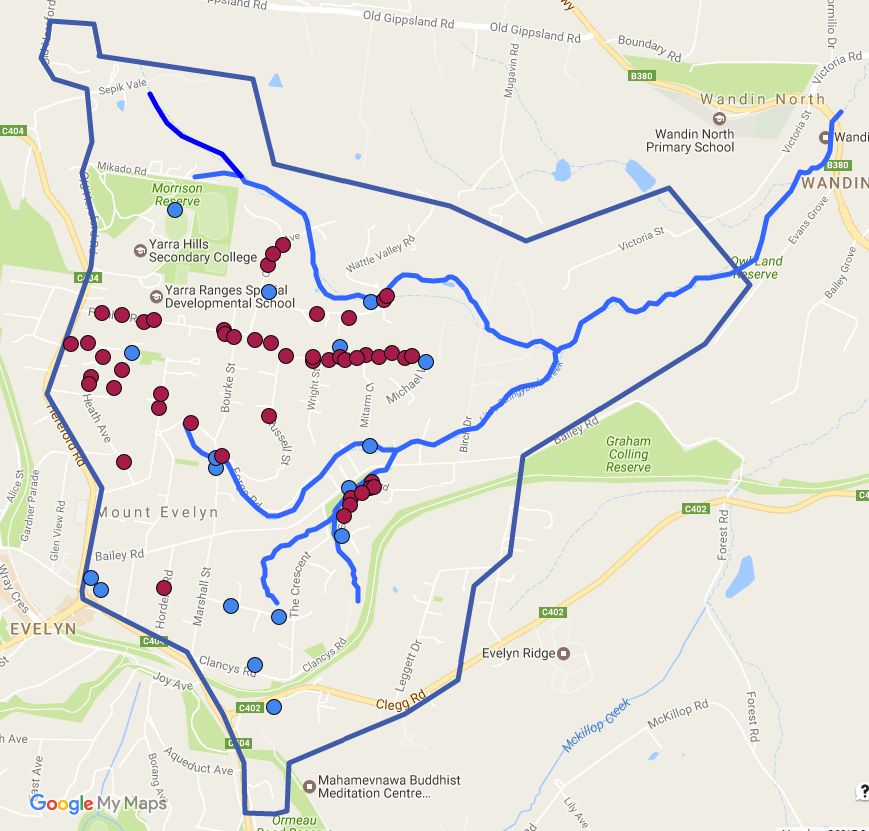|
Allotment works
Between 2008 and 2016, the project has installed stormwater control measures on 243 private allotments. These properties were funded through four distinct rounds of innovative, market-based instruments, including two uniform-price auctions. On average, allotment owners have received $5,760 of incentives from the project. Collectively, the works on allotments are:
- treating 5.8 ha of connected impervious roof surface, 91% of the total connected impervious roof surface located on the participating properties (6.4ha);
- saving 23.4 ML/yr of potable water, through use of harvested stormwater; and
- infiltrating 9.5 ML/yr of stormwater into the ground (for the purpose of restoring baseflows).
Public works
Large infiltration systems
The project has installed 17 larger scale stormwater treatment measures, on both private and public land. These works were designed and constructed through a partnership between Yarra Ranges Council, Melbourne Water, STORM Consulting and the LSC Project. Through those streetscape scale works, the project is:
- treating 13.1 ha of connected impervious surface (roads and roofs);
- saving 13 ML/yr of potable water, through use of harvested stormwater; and
- infiltrating 28 ML/yr of stormwater into the ground (for base flow replacement).
The LSC project has also installed two large, pre-fabricated stormwater filters. These systems were used to improve the quality of stormwater entering the creek, which is of particular importance at the outlet of the industrial precinct (Clancy Road). Space constraints at these sites did not allow for systems also capable of reducing flows, which is a central objective of works in the catchment wherever possible.
Nature Strip Works
The project has installed 49 stormwater treatments systems on nature strips (including rain-gardens and infiltration chambers), to intercept, retain, infiltrate, evapotranspire and treat road run-off. Originally installed in two precinct areas (Newton Avenue and Stringybark North Boulevard), these systems have been rolled out across the catchment of Little Stringybark Creek. Through the nature strip systems, the project is:
- treating 2.4 ha of connected impervious surface (roads and roofs); and
- infiltrating (and losing through evapotranspiration) 4.7 ML/yr of stormwater.
Most of these systems have been constructed with minimal design, promoting the use of a very simple, robust design and suitable superintending of the contractors by the project’s design engineers (from STORM).
|
|

Fig 1: Location of treatement works on allotments
 Fig 2: Location of public works, including larger infiltration systems (red) and nature strips (blue)
Fig 2: Location of public works, including larger infiltration systems (red) and nature strips (blue)
|

